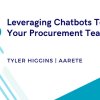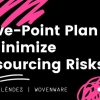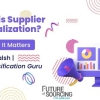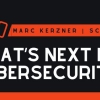3 Things Enterprises Must Do Before Embracing Cutting-Edge Technologies
In the last few years, with the growing hype around automation, artificial intelligence (AI) and analytics, there has been a feverish pace of activities in the IT outsourcing space on both sides of the table from enterprises and service providers. There’s also action happening in the middle of the table with the product vendors and on the outskirts with the analysts and industry commentators. Every few years it seems that the stakes have never been so high until the next wave of bleeding-edge technologies emerge.
All participants in the ecosystem are trying to make the best of the opportunity or to stay relevant at minimum. This happens largely in the IT arena, which must ensure that business derives benefit to sell faster, cheaper and better. If businesses don’t see true value, all this circus will remain just that—a circus.
Today these new technologies are building on existing context and understanding. For example, automation builds on current processes, analytics builds on existing data and Artificial Intelligence (AI) is based on current decision paradigm. The machines (or rather software) are able to undertake these tasks consistently (with low/no-error rates), without vacations and can unravel insights that the human mind cannot due to its inherent limitations of cognitive and processing prowess. However, the return on investment of these new technologies depends on the quality of the underlying current processes, data and decision paradigms. If these underlying elements are not of high integrity, investments in such bleeding-edge technologies can lead to corporate bloodshed!
Despite the prevalence of these technologies over the past few years, no real-world enterprise can say it has reaped enterprise-wide benefits. Most deployments are launched under ideal conditions but real-world challenges are not taken into consideration during these pilots. This causes full-scale deployments to encounter challenges that were not anticipated in the pilot phase, which in turn results in delays. The key is for enterprises to see enduring, sustained value from these investments on new technologies beyond the pilots.
What can enterprises do even as these new emerging technologies like automation, AI and analytics take time to percolate down? How can organizations ensure that the new technologies will deliver higher value when deployed?
The common, underlying aspect of new technologies is that the starting point of all initiatives includes existing processes, decision paradigms and sets of data. Enterprises must look at how well these existing elements function.
Processes: Processes must be streamlined, updated and made relevant before any deployment of automation to get maximum benefits. While variations may exist, if current processes have higher numbers of exceptions or variations than when initially conceived, it may be time to tweak or overhaul the process. If automation is built over an inefficient process the value will not be as high as if the automation rides a more efficient process.
Decision Paradigms: AI heuristics are typically built over the current understanding and decision paradigms. What are the inputs considered when making decisions currently by a person or a system? Is there an additional basis of assessments that needs to be formally captured? This bucket (of the three) is unique as many of these decision-processing criteria are in people’s minds and several of the unique scenarios are not documented or easily envisioned until a “run” of few years, which helps a person or a system understand all possible exceptions. A solution is to build runbooks (or update existing ones) and create knowledge bodies and processes to keep them current. This also has some other benefits that were covered in an earlier article.
Data: This is where the game gets trickier. Analytics is the art and science of leveraging data for business, but it is only as good as the strength of the underlying data. Data is really at the core of any enterprise’s success. It is a widely used term, but can include business data, intellectual property, operational data and so many other sets of information. With this also comes possible errors in compiling data, which can lead to corruption, inaccuracy or outdated data. An effort to strengthen the quality of data within an enterprise in key business functions is extremely important before unleashing automation, AI, analytics or any future technology.
Beyond these three, another area to start preparing for the future is to enable a stronger partnership between business and IT. This needs to be driven from the top through changes in organizational structure and collaboration success metrics. The success of this partnership will determine the success of the enterprise.
Enterprises with a superior business-IT partnership with major process improvement, robust knowledge management and strong data credibility will find themselves placed well to deploy some of the newer technologies and derive higher value from them.
Region:









